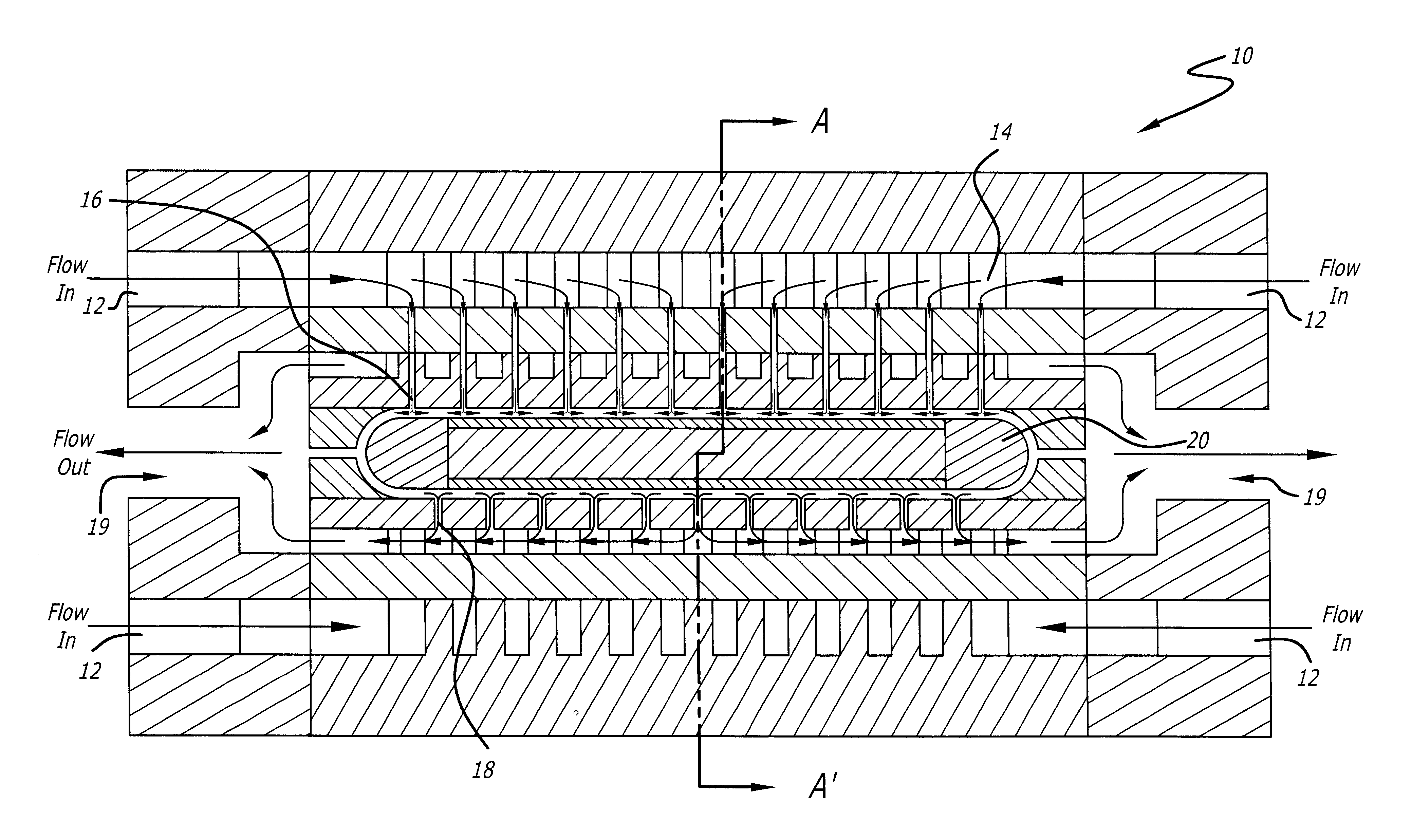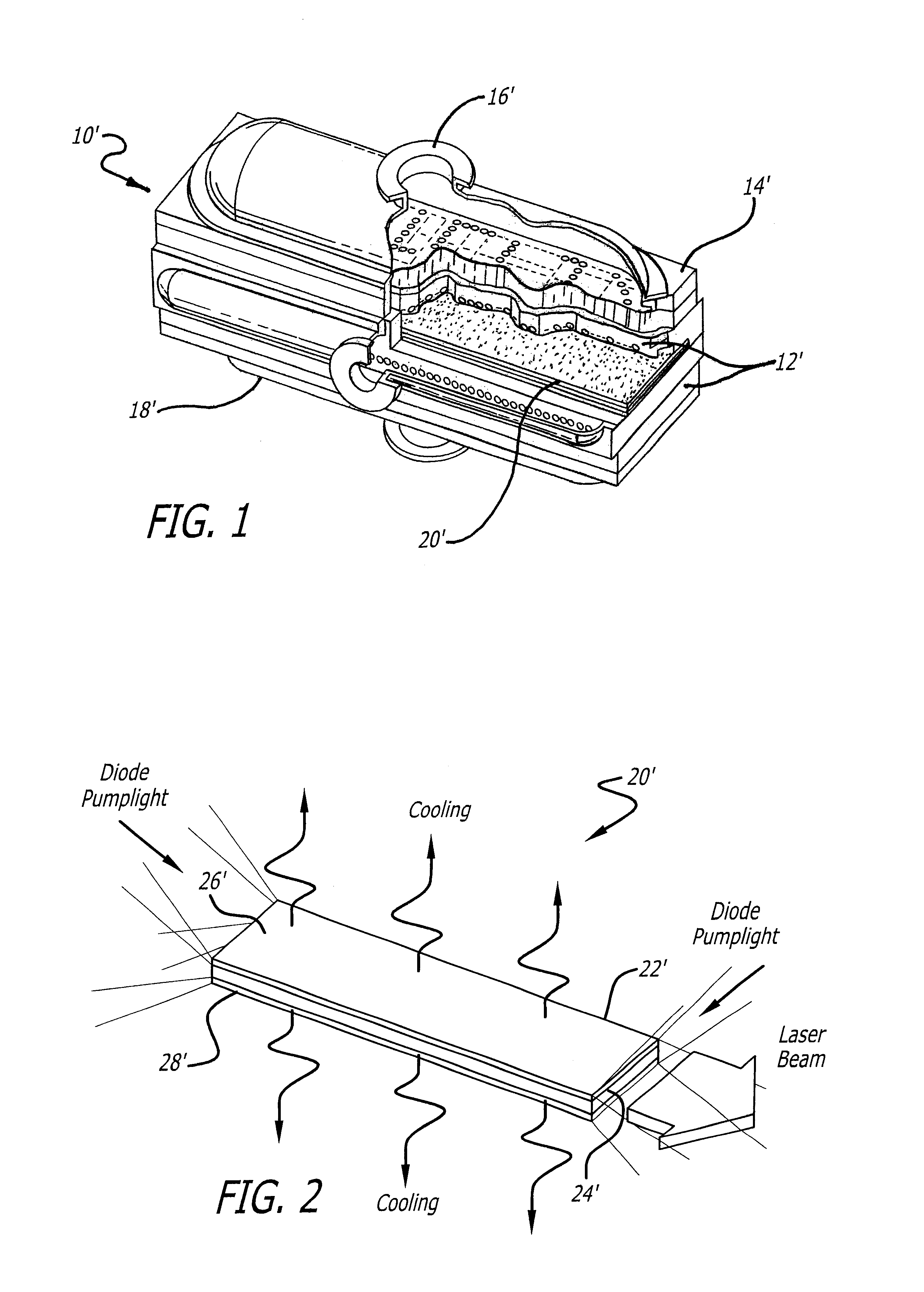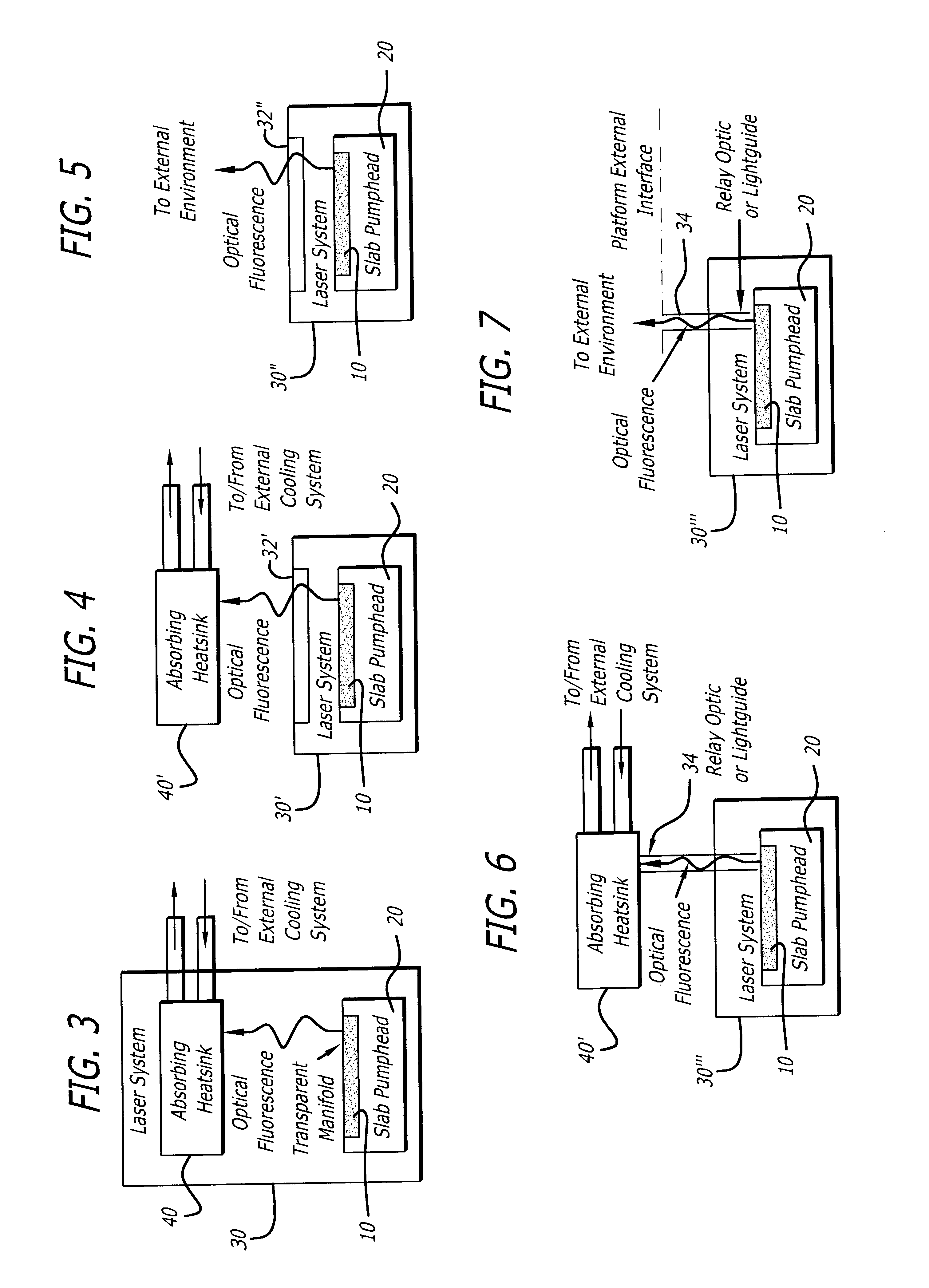Laser cooling apparatus and method
a laser and cooling apparatus technology, applied in lasers, laser cooling arrangements, laser details, etc., can solve the problems of unavoidable portion of sensible heat, waste of energy particularly problematic with solid-state lasers, and inability to heat removal
- Summary
- Abstract
- Description
- Claims
- Application Information
AI Technical Summary
Benefits of technology
Problems solved by technology
Method used
Image
Examples
Embodiment Construction
Illustrative embodiments and exemplary applications will now be described with reference to the accompanying drawings to disclose the advantageous teachings of the present invention.
While the present invention is described herein with reference to illustrative embodiments for particular applications, it should be understood that the invention is not limited thereto. Those having ordinary skill in the art and access to the teachings provided herein will recognize additional modifications, applications, and embodiments within the scope thereof and additional fields in which the present invention would be of significant utility.
FIG. 1 is a cut-away 3-D solid model view of a multi-jet impingement-cooled slab laser pumphead designed in accordance with the teachings of the above-referenced Betin et al. application, which have been incorporated herein by reference. As discussed more fully in the Betin et al. application, the pumphead 10' includes a diffusion-bonded rectangular slab laser m...
PUM
 Login to View More
Login to View More Abstract
Description
Claims
Application Information
 Login to View More
Login to View More - R&D
- Intellectual Property
- Life Sciences
- Materials
- Tech Scout
- Unparalleled Data Quality
- Higher Quality Content
- 60% Fewer Hallucinations
Browse by: Latest US Patents, China's latest patents, Technical Efficacy Thesaurus, Application Domain, Technology Topic, Popular Technical Reports.
© 2025 PatSnap. All rights reserved.Legal|Privacy policy|Modern Slavery Act Transparency Statement|Sitemap|About US| Contact US: help@patsnap.com



